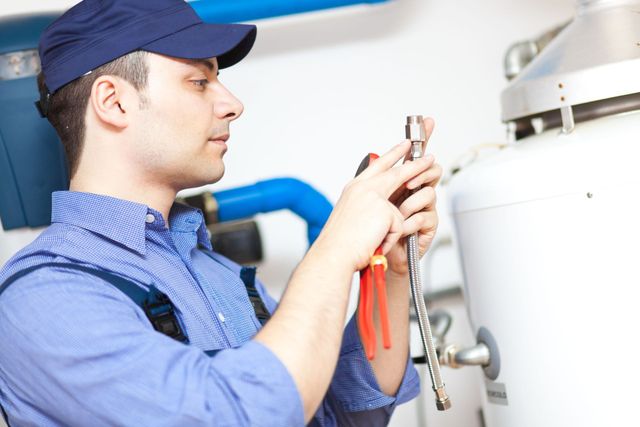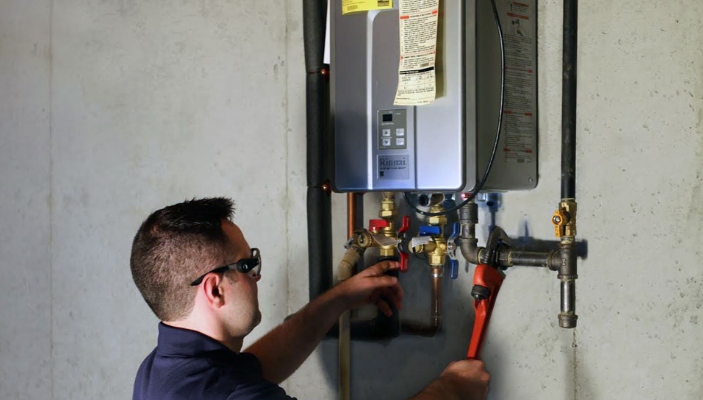What are your opinions about How to Maintain a Hot Water Heater in a Few Simple Steps?

Warm water is important for day-to-day convenience, whether it's for a refreshing shower or cleaning recipes. To ensure your warm water system runs successfully and lasts longer, routine maintenance is essential. This write-up provides useful ideas and insights on how to keep your home's hot water system to prevent disturbances and costly repair work.
Intro
Keeping your home's hot water system may appear challenging, however with a couple of simple steps, you can ensure it runs efficiently for years to come. This guide covers whatever from recognizing your warm water system to DIY maintenance pointers and knowing when to call specialist help.
Value of Keeping Your Hot Water System
Normal maintenance not only prolongs the life expectancy of your warm water system yet also ensures it runs successfully. Neglecting maintenance can result in reduced effectiveness, greater power expenses, and also premature failing of the system.
Indicators Your Warm Water System Needs Upkeep
Recognizing when your warm water system requires focus can protect against significant concerns. Keep an eye out for signs such as inconsistent water temperature, unusual noises from the heater, or rusty water.
Flushing the Water Heater
Flushing your water heater removes sediment buildup, improving efficiency and lengthening its life.
Monitoring and Replacing Anode Rods
Anode poles protect against deterioration inside the container. Checking and changing them when worn is important.
Complicated Problems Requiring Professional Help
Instances consist of major leaks, electrical troubles, or if your hot water heater is constantly underperforming.
Routine Professional Upkeep Conveniences
Expert upkeep can include comprehensive inspections, tune-ups, and ensuring conformity with security standards.
Inspecting and Adjusting Temperature Level Settings
Adjusting the temperature level settings guarantees optimum efficiency and safety and security.
DIY Tips for Maintenance
You can execute a number of maintenance jobs yourself to maintain your warm water system in top condition.
Looking for Leaks
Regularly evaluate pipes and connections for leaks, as these can lead to water damages and higher costs.
Comprehending Your Hot Water System
Prior to diving right into upkeep tasks, it's helpful to comprehend the standard elements of your warm water system. Generally, this includes the hot water heater itself, pipes, anode poles, and temperature controls.
Month-to-month Maintenance Tasks
Normal monthly checks can aid catch small issues prior to they escalate.
Checking Stress Relief Valves
Testing the pressure safety valve ensures it works correctly and stops too much pressure build-up.
Insulating Pipelines
Insulating warm water pipelines reduces warm loss and can conserve energy.
When to Call a Specialist
While DIY maintenance is advantageous, some issues need specialist knowledge.
Verdict
Regular maintenance of your home's hot water system is important for efficiency, longevity, and price savings. By adhering to these ideas and recognizing when to seek professional assistance, you can make sure a reliable supply of warm water without unanticipated disruptions.
How to Maintain an Instant Hot Water Heater
Before tinkering with your hot water heater, make sure that it’s not powered on. You also have to turn off the main circuit breaker and shut off the main gas line to prevent accidents. Also turn off the water valves connected to your unit to prevent water from flowing into and out of the appliance. 2. When you’re done, you have to detach the purge valves’ caps. These look like the letter “T†and are situated on either side of the water valves. Doing so will release any pressure that has accumulated inside the valves while at the same time avoid hot water from shooting out and burning your skin. 3. When the purge valves’ caps are removed, you have to connect your hosing lines to the valves. Your unit should have come with three hoses but if it didn’t, you can purchase these things from any hardware or home repair shops. You can also get them from retail stores that sell water heating systems. Read the user’s manual and follow it to complete this task properly. When the hosing lines are connected, open the purge port’s valves. 4. You should never use harsh chemical cleaners or solutions when cleaning your unit. Make use of white vinegar instead. It should be undiluted and you’ll probably use about 2 gallons. 5. Now flush your water heater. This task should probably take about 40 minutes. We can’t give you specific directions for this because the procedure is carried out depending on the type, model and brand of your heater. With that being said, refer to the user’s manual. 6. When you’re done draining the unit, you have to turn off the purge port valves again. Remove the hosing lines that you earlier installed on each of the water valves. Put the valve caps (purge port) back in their respective places and be very careful so as not to damage the rubber discs that are found inside these caps. 7. Now that everything’s back in place, check your user’s manual again to find out how to reactivate your water heating system. 8. Once it is working, turn one of your hot water faucets on just to let air pass through the heater’s water supply pipes. Leave the tap on until water flows smoothly out of it. https://www.orrplumbing.com/blog/2014/september/how-to-maintain-an-instant-hot-water-heater/

As a passionate person who reads about How to Maintain Your Water Heater & Prolong its Life, I was thinking sharing that excerpt was essential. Sharing is good. Helping people is fun. Many thanks for being here. Please visit our site back soon.
Call Today